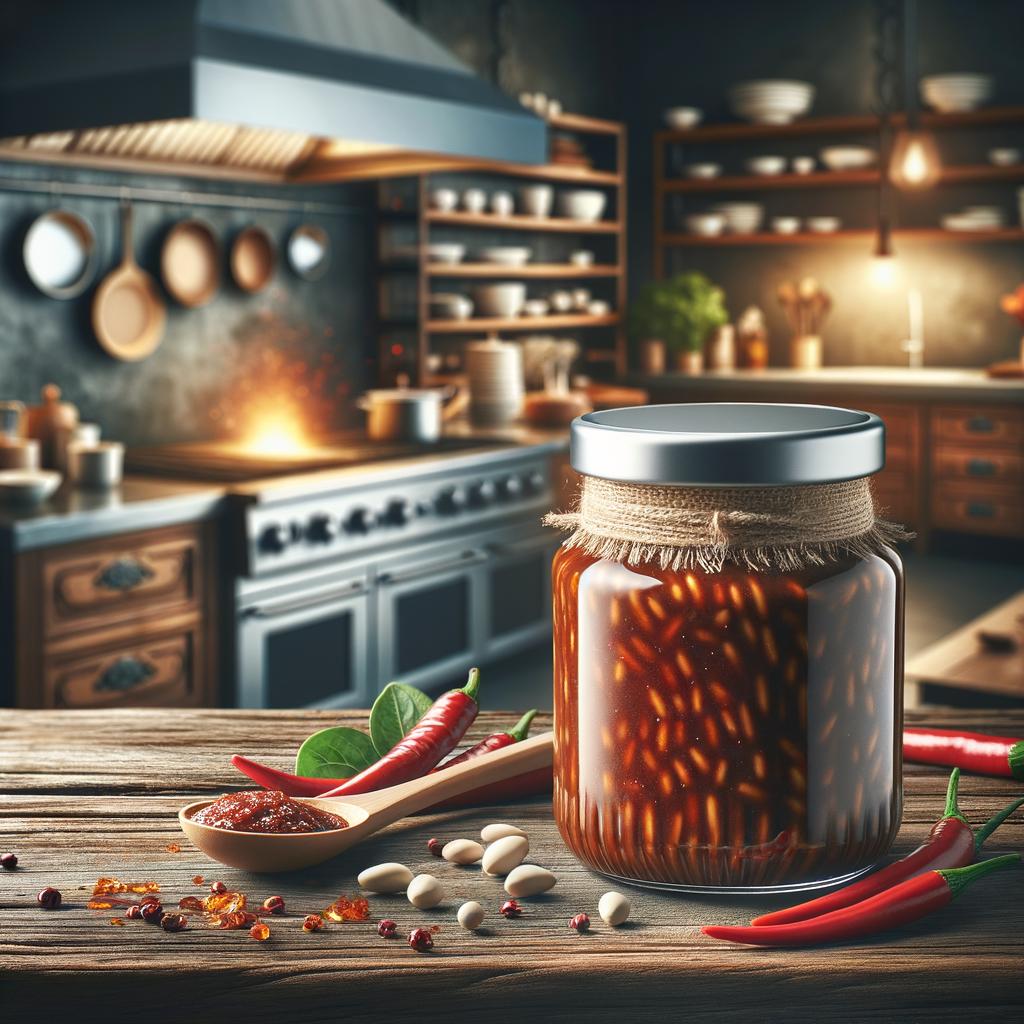Chili Bean Paste

Description
Chili bean paste, also known as Doubanjiang, is an enchanting ingredient that has been the backbone of Sichuan cuisine for centuries. It is a deep, ruddy paste with a texture that is delightfully chunky yet smooth, offering a tactile pleasure to any culinary endeavor. The flavor profile of chili bean paste is a complex symphony of tastes - it's salty, umami, slightly sweet, and of course, spicy. It's a robust and full-bodied paste that is characterized by its fiery red color and an aroma that is intoxicatingly pungent. What sets it apart from similar ingredients is its unique fermentation process, which involves broad beans and chili peppers, imbuing it with a depth of flavor that is hard to replicate.
Primary Uses
Chili bean paste is the heart and soul of many Asian dishes, particularly in Sichuan cooking. It's the star ingredient in Mapo Tofu, a dish that has warmed the hearts and bellies of many around the world. It's also used in hot pots, stir-fries, and braised dishes, lending its fiery personality to every bite. Beyond the culinary world, chili bean paste has a cultural significance in China, where it's seen as a symbol of the Sichuan region's bold and fiery character.
History
The story of chili bean paste is as rich as its flavor. Its origins trace back to the Qin Dynasty, over 2000 years ago, in the Sichuan region of China. The paste began as a humble preservation method for broad beans and chili peppers, but soon, its irresistible flavor catapulted it to the center of Sichuan cuisine. Over time, the paste has evolved, with different regions adding their unique twist, but the essence remains the same. There's an old Sichuan saying that goes, "Without doubanjiang, there's no desire to eat," which underscores its importance in their culinary culture.
Nutritional Information
Chili bean paste is not just a flavor powerhouse but also a nutritional one. It's packed with protein, fiber, and a range of vitamins and minerals, including Vitamin A, C, and K, as well as iron and potassium. The capsaicin in the chili peppers has been linked to boosting metabolism and aiding in weight loss. However, as with all things, moderation is key. The paste can be high in sodium, which should be considered in a balanced diet. Compared to similar ingredients, chili bean paste offers a richer nutritional profile due to the addition of fermented broad beans.
In the grand tapestry of food history, chili bean paste is a vibrant thread, weaving a tale of culinary delight, cultural identity, and nutritional wealth. It's a testament to the magic that happens when simple ingredients are transformed through time-honored techniques.

